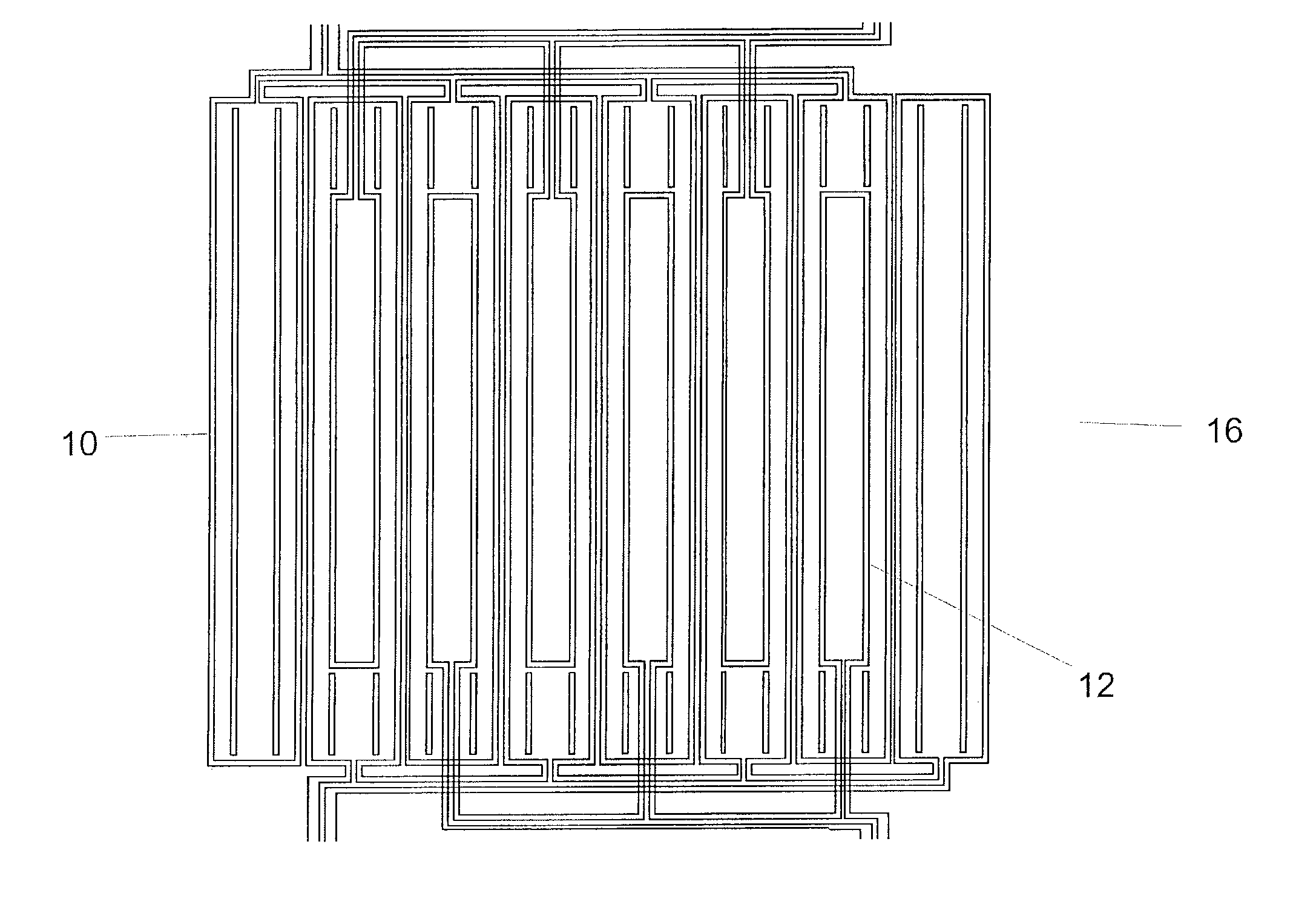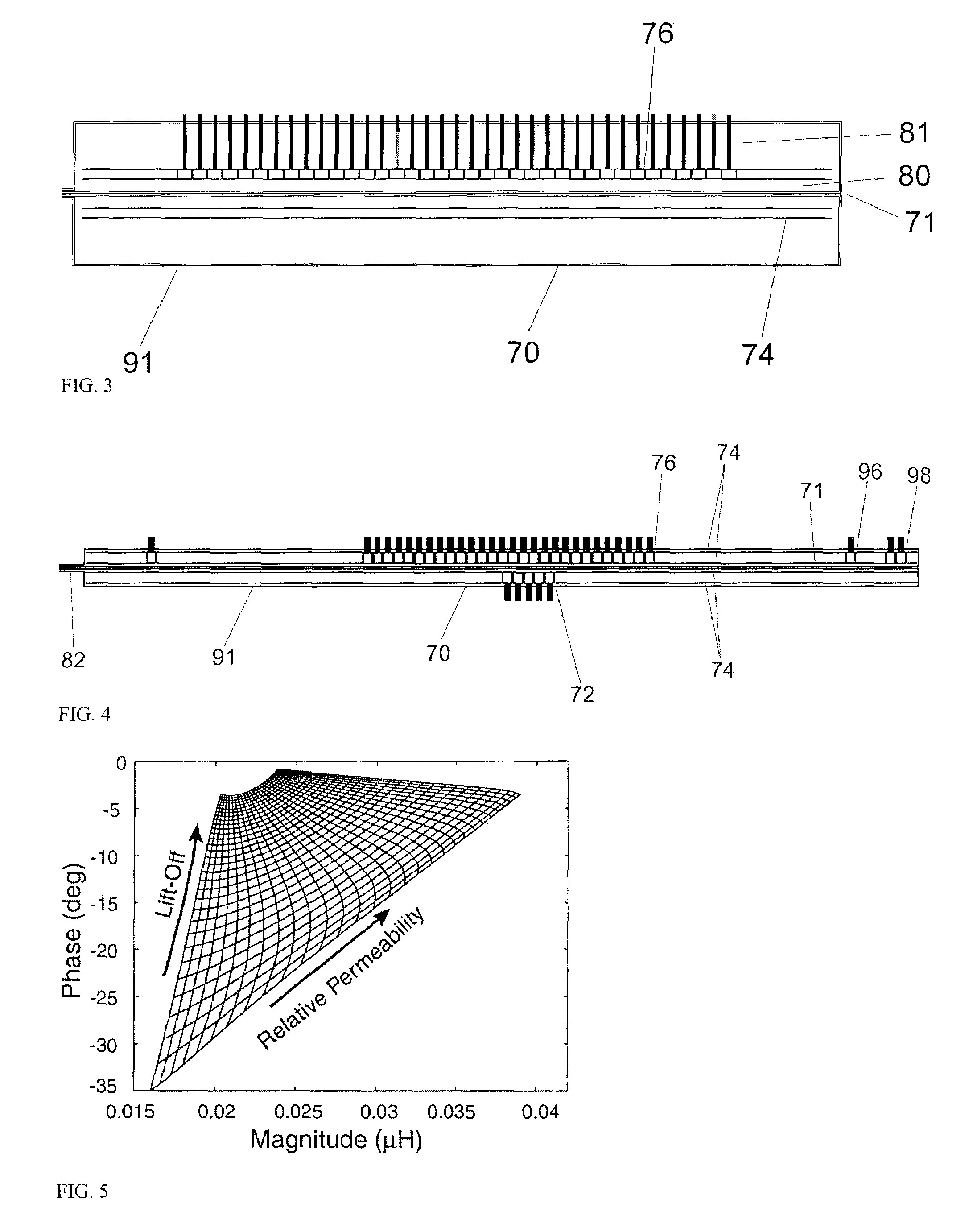Applied and residual stress measurements using magnetic field sensors
a magnetic field and sensor technology, applied in the direction of force/torque/work measurement apparatus, instruments, material magnetic variables, etc., can solve the problems of catastrophic failure of components, mechanical properties of ultra-high strength steels can be seriously degraded, and residual stress that compromises the integrity of components, etc., to achieve the effect of enhancing capabilities and promoting accurate modeling of respons
- Summary
- Abstract
- Description
- Claims
- Application Information
AI Technical Summary
Benefits of technology
Problems solved by technology
Method used
Image
Examples
Embodiment Construction
[0059]The use of conformable eddy-current sensors and sensor arrays is described herein for the nondestructive characterization of materials, particularly as it applies to the characterization of applied and residual stresses. This sensing approach can be used to monitor the material characteristics at a given location with single or multiple sensing element sensors and sensor arrays using hand-held probes or mounted into automated scanners. In addition, the sensors can be mounted into a structure in proximity to a material under test for monitoring the property changes while the material is being stressed and fatigued. The sensors can also be used to detect process related changes in the material properties, such as grinding bums in steels either as a part of in-process monitoring or at any time after processing, i.e., during quality control inspections or in service.
[0060]A conformable eddy-current sensor suitable for these measurements, the Meandering Winding Magnetometer (MWM®),...
PUM
| Property | Measurement | Unit |
|---|---|---|
| frequency | aaaaa | aaaaa |
| frequency | aaaaa | aaaaa |
| temperature | aaaaa | aaaaa |
Abstract
Description
Claims
Application Information
 Login to View More
Login to View More - R&D
- Intellectual Property
- Life Sciences
- Materials
- Tech Scout
- Unparalleled Data Quality
- Higher Quality Content
- 60% Fewer Hallucinations
Browse by: Latest US Patents, China's latest patents, Technical Efficacy Thesaurus, Application Domain, Technology Topic, Popular Technical Reports.
© 2025 PatSnap. All rights reserved.Legal|Privacy policy|Modern Slavery Act Transparency Statement|Sitemap|About US| Contact US: help@patsnap.com



